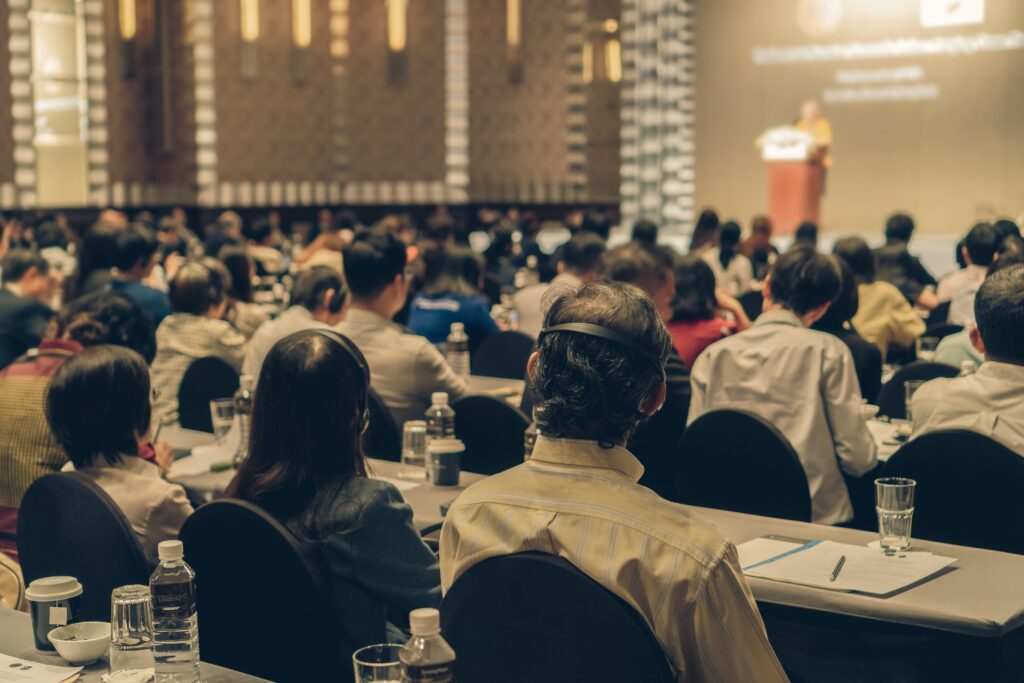Hello, everyone. My name is Daichi, an expert providing the information about the radiation issues in an easy-to-understand manner.
With regard to the review of the IAEA, for the volume reductiona and recycling of removed soil arising from remediation activities, which the Japanese national government has currently promoted, this article covered the background etc. for the review of the IAEA, this article covered the overall evaluation of the IAEA.
In addition, regarding the detailed evaluation of the IAEA, this article covered the ‘Chapter III: Regulatory aspects’, this article covered the ‘Chapter IV: Volume reduction and the managed recycling of removed soil’, this article covered the ‘Chapter V: Final disposal of removed soil and waste’.
As a continuous work from the previous, this article covers the ‘Chapter VI: Public communication and stakeholder engagement’.
In other words, this article covers, for example, the following questions:
– What is the ‘Public communication and stakeholder engagement’ in the final report on recycling of removed soil etc. arising from decontamination activities?
– What kind of evaluation did the IAEA make for the ‘Public communication and stakeholder engagement’?
Table of contents of this article
- IAEA Final Report on Recycling of Removed Soil etc. Arising from Decontamination Activities (Vol. 6)
- What is the ‘Public communication and stakeholder engagement’ mentioned in the IAEA final report?
- Evaluation written in the ‘Chapter VI: Public communication and stakeholder engagement’
- Section VI.1 Overall approach to public communication and stakeholder engagement
- Section VI.2 Promotion of nationwide understanding
- Section VI.3 Promotion of regional social acceptance
- Summary
I have been involved with the radiation-relevant issues, like the policy on the decontamination activities and the management of the Interim Storage Facility, after the accident of the Fukushima Daiichi Nuclear Power Plant in 2011.
I received a doctorate in the field of radiation, while working in Fukushima.
IAEA Final Report on Recycling of Removed Soil etc. Arising from Decontamination Activities (Vol. 6)
Now, let’s take a look at the contents of the ‘Chapter VI: Public communication and stakeholder engagement’ of the final report.
What is the ‘Public communication and stakeholder engagement’ mentioned in the IAEA final report?

The ‘public communication and stakeholder engagement’ mentioned here is, as described in this article, efforts to build understanding for the projects, through information dissemination to stakeholders, promotion of stakeholder engagement etc., which is essential for recycling of removed soil and final disposal, which need to be completed by March 2045 outside Fukushima Prefecture.
Evaluation written in the ‘Chapter VI: Public communication and stakeholder engagement’
In the following parts each evaluation item is elaborated, but for the sake of convenience, alphabets (i.e., a,b,c…) are added at the beginning of each item (there are no alphabets in the actual report).
Section VI.1 Overall approach to public communication and stakeholder engagement

The importance of the engagement of the public and stakeholders regarding recycling and final disposal was recognized from the beginning, and it is included in the agenda of all three Experts Meetings.
I think that positive evaluation to some extent was made, with regard to the measures implemented by the MOEJ based on the discussion and advise of the team of the experts, between the first Expert Meeting (May 2023) and the third Expert Meeting (February 2024).
The efforts on information dissemination about recycling and final disposal projects were also elaborated in this article, but here they are high evaluated, and it is required for them to be continuously conducted.
There are no similar efforts on environmental restration projects in the world, for such a large amount of removed soil to be recycled, therefore, they will be a beneficial case study for other countries, including good practices and lessons learnd, in case similar accidents happen in the future.
I think that the following efforst are expected including: Sharing findings with the Member States, presentations in international conferences and symposiums, taking advantage of the connection with the IAEA established through the Experts Meeting, input into the relevant documents including the IAEA Safety Standards, information dissemination through SNS.
The ‘challenging timelines set by the JESCO Law’ mentioned here means the schedule stipulated in Paragraph 2, Article 3 of the Law of the Japan Environmental Storage & Safety Corporation (in Japanese) (Implementation of necessary measures to complete final disposal outside Fukushima Prefecture within 30 years from start of interim storge (= by March 2045)).
In order to meet this schedule, it is necessary to advance the site selection process of the final disposal facility, as well as the recycling projects.
The end of the FY2024 was the point of time to compile the achivements of the Technology Development Strategy for Volume Reduction and Recycling of Removed Soil and Waste under Interim Storage, and it was also the point of time for 20 years to go the deadline of the completion of the final disposal: March 2045.
Given the contents, magnitude of the projects and necessary time for the stakeholder involvement, it can’t be said that enough time still remains, and it is here required to accelerate its efforts in FY2025 onward.
Section VI.2 Promotion of nationwide understanding

According to the final report, during the first Experts Meeting, the team of experts visited The Great East Japan Earthquake and Nuclear Disaster Memorial Museum and explanation was given by the Director Noboru Takamura.
Not only in the summary reports of the first and the second Experts Meetings, but also in the final report, active use of the museum is encouraged, probably because the experts were so deeply impressed by the exhibitions and explanation.
As explained in this article, concentration procedure will lead to the volume reduction of soil and waste to be disposed of, but simultaneously to the increase of radioactivity concentration.
Therefore, more advanced system for radiation protection could be necessary, depending on the radioactivity concentration.
This is just an example, but the importance is here emphasized to communicate people and stakeholders clearly, that there is no single perfect solution superior to other approaches in every aspect, but there are always trade-off relationships.
I think that it is pointed out here, that the difference should be clearly explained, between the removed soil to be recycled, and that to be finally disposed of (e.g. radioactivity concentration).
In addition, it is described here, that it is necesary to communicate carefully people in Japan, including its history and significance, the fact that it has been decieded that the final disposal is supposed to be implemeneted outside Fukushima Prefecture, taking account of excessive burden on people in Fukushima.
It seems to be a bit sudden, because it is not so much mentioned in the final report, but I think that it is pointed out here, that it is important for the units representing influence of radiation on people etc. to be explained to people and major stakeholders in an easy-to-understand manner, because the units are diverse and very complicated.
Please refer to this article, for the three units, which at least I would like you to know, and please refer also to this article, for the five different meanings, which the unit ‘Sievert’ has.
Here an incentive for recipients of the recycling and the final disposal projects is touched upon.
It could often happen, that financial support would be provided, including foundation of a fund or provision of subsidy, for the acceptance of so-called ‘the nuisance facility’.
However, the importance is emphasized here to communicate carefully that the facility will contribute to supporting the building of a susutainable community in the affected areas.
I am not denying the financial support and incentive at all, but from personal perspective I would like as many people as possible to understand the importance of the projects and support these efforts and also visit on-sites like the Interim Storage Facility and Nagadoro, taking opportunities of tours to these sites.
As introduced in this article, potted plants using removed soil are placed not only in the headquarters of the MOEJ, but also in the office of the Prime Minister, the Regional Environmental Offices of the MOEJ and other ministries.
Surrounding air dose rates have been continuously monitored, and it has been confirmed that there has been no changes before and after their placement, and it is here described that even the small scale projects are effective to make people aware of the safety of the removed soil, and it is meaningful to enlarge these kinds of projects.
Section VI.3 Promotion of regional social acceptance

‘A new Working Group’ mentioned here is ‘the Working Group for measures to secure regional social acceptance for the managed recycling and the final disposal of removeds soil in the Interim Storage Facility (the Regional Working Group), one of a variety of conferences of experts described in ‘this website (in Japanese).
In this WG, toward the completion of final disposal by March 2045, the approach for communication with local stakeholder and for regional co-prosperity in each stage for the recycling and final disposal projects are supposed to be discussed, and the first WG was held in January 2024 (between the 2nd and the 3rd Experts Meetings).
Taking these achievements into consideration, I think that it is evaluated here that the progress can be recognized for the efforts regarding the stakeholder engagement.
As a national strategy relevant to risk communication, the Reconstruction Agency published The Strategy for Dispelling Misinformation and Strengthening Risk Communication (in Japanese), and I think that this mainly aims at repelling misinformation, which is not based on scientific evidence and has caused damaged on the affected areas.
Communication with stakeholder associated with recycling and final disposal is discussed in the Team of Communication Promotion and the Regional Working Group described in this website (in Japanese), but I think that there seems to be no plan specifically established as a master plan.
I think that here it is required for the basic master plan to be developed to represent the direction, in order to accelerate the measures toward the completion of the final disposal by March 2045.
It is related with the point c. of this article, it is pointed out here that way forward toward the final disposal (a comprehensive and strategic schedule) should be represented, and within that, specific approach for a site selection for the final disposal should be represented.
From my personal perspective, a combination of these two approaches is important, rather than choosing one from the two (proposal from the national government or business entity or in partnership with local government / prefectures), for the selection for the final disposal site.
Anyway, as described here, communication with major stakeholders and regional society is essential for these projects and as mentioned in the below point n., establishment of a system to encourage the involvement of stakeholders at the early stage would be required.
At last, the importance of stakeholder involvement from the early stage is here underlined.
Not only in the reconstruction projects after the accident of the Fukushima Daiichi Nuclear Power Station, but also in the construction of other so-called ‘the nuisance facility’, I think that it doesn’t lead to good results, if facility sites are unilaterally decided and announced to people.
Of course, it is difficult to satisfy all stakeholders by any approaches, but the important is the establishment of environment for information to be shared with the stakeholder in a timely manner, and also the establishment of a system, in which decision-makers and relevant stakeholders can have a dialogue bilaterally, and the stakeholders can participate in the decision-making process.
I believe that the establishment of the environment and the system in the early stage would increase the possibility for the successful project.
Summary
With regard to the final report of the IAEA Experts Meetings on volume reduction and recycling of removed soil, this article covered the contents of conclusions of the ‘Chapter VI: Public communication and stakeholder engagement’.
I think that, with respect to the projects of recycling and final disposal, the positive evaluations for the approach for the progress made and the information dissemination, represent that the approach has been on the right track.
On the other hand, it is required for the system for stakeholder engagement to be established as early as possible, so I think that it is necessary to accelerate the measures in order to complete the final disposal project successfully, which has a deadline of March 2045.
You can read the same article in Japanese here.
Thank you very much for reading this article.
See you next time!



コメント